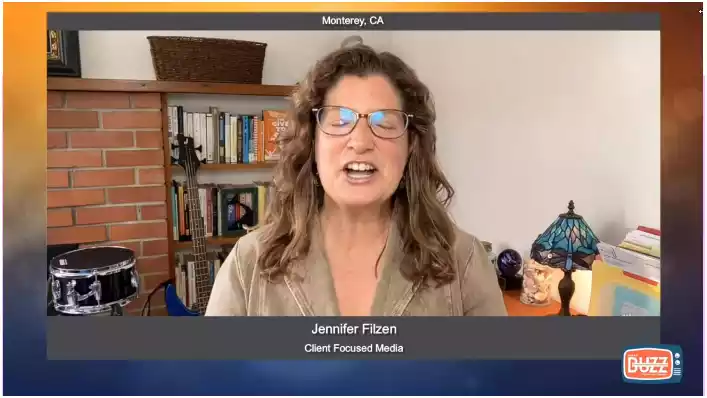Overcoming Prior Authorization Challenges: Solutions & Strategies
Dive into the complex world of prior authorization challenges and uncover the solutions that can revolutionize healthcare. Explore the obstacles, discover the strategies, and pave the way for smoother processes. Join us on this journey of innovation and efficiency!

Understanding what is prior authorization in pharmacy involves unraveling the process where healthcare providers must obtain approval from a patient’s insurance before a prescribed medication is dispensed. This system, aimed at managing healthcare costs and ensuring drug appropriateness, often requires detailed information about the patient’s condition and the medication’s necessity. As the healthcare industry evolves, so does the complexity of navigating these authorizations, making it essential for patients and providers to be well-informed about this critical step in medication management.
Unlock Your Access Now!
Table of Contents
The Challenges in Prior Authorization

This discourse delves deep into the multifaceted hurdles posed by Prior Authorization, dissecting its impact on healthcare delivery and proposing remedies to streamline this intricate tapestry.
The Growing Difficulty of Prior Permission
Prior Authorization was once a simple stop along the healthcare path, but with the growing number of medical interventions and treatments, it has turned into a confusing maze. The terrain is now a maze of administrative entanglements rather than just the landscape. What was once a straightforward precaution has evolved into a laborious process with numerous administrative details.
Scientific developments in medicine have expanded the use of Prior Authorization to include a wide range of procedures and drugs. As a result, a growing list of PA requirements, complex laws, and piles of paperwork overwhelm healthcare providers, causing delays and disruptions in patient care.
Getting Around the Prior Authorization Obstacle Minefield
The path of Prior Authorization is fraught with a myriad of obstacles, complicating the landscape of healthcare delivery. Foremost among these challenges is the lack of standardized procedures among insurance entities. Divergent requirements and processes among insurers compel healthcare providers to traverse a maze of regulations and protocols.
Another formidable barrier is the time-intensive nature of the PA process. Completing requisite paperwork, liaising with insurance companies, and awaiting approval devour substantial time, augmenting the administrative load on healthcare providers and potentially impeding essential patient treatments.
Moreover, reliance on manual and paper-based processes exacerbates inefficiencies. In an era dominated by digital prowess, the persistence of manual PA procedures hampers expediency and amplifies the margin for error, adding layers of complexity to an already intricate process.
Prior Authorization’s Impact on Patient Care
The delay induced by Prior Authorization poses a formidable impediment to optimal patient outcomes. The imperative for providers to secure approval prior to commencing treatment engenders a chasm between diagnosis and intervention. This hiatus is particularly deleterious for patients grappling with acute or swiftly progressing conditions, where every moment is consequential.
Furthermore, the unpredictable timelines for PA approval, ranging from hours to days, exacerbate these delays, subjecting patients to prolonged anguish, uncertainty, and potentially avoidable discomfort. In severe instances, these delays can tangibly alter the trajectory of a patient’s illness and their overall prognosis, underscoring the urgent imperative to rectify the inefficiencies inherent in the PA process.
The Weight on Healthcare Providers
The arduous journey of Prior Authorization not only burdens patients but also exacts a heavy toll on healthcare providers. The administrative rigmarole associated with PA—completing paperwork, liaising with insurers—diverts precious time and resources from patient care. Surveys reveal that clinicians devote a substantial portion of their week to PA-related tasks, squandering valuable opportunities for direct patient engagement.
Beyond the temporal aspect, the complexity of PA requisites can precipitate provider burnout—a disquieting trend in the healthcare arena. In addition to the strain of the process itself, the incessant follow-ups and grappling with denials breed stress and disillusionment. Thus, the administrative burden of PA extends far beyond mere service delays, imperiling the overall quality of healthcare provision and the well-being of its custodians
I'm very thankful for Portiva who I know is looking after my practice while I'm gone the virtual assistants can manage prescription refills, documents they can triage patients and just kind of answer administrative questions and they can handle a lot on their own. But also, they're very good about contacting me if there's any emergency or anything I need to attend to. So I'm very thankful for Portiva they can help almost any provider almost anywhere and it really allows for some good work-life balance as I'm getting to experience right now at my family farm so I'm very thankful for Portiva and I'm very happy to use their services"

Board Certified Family Medicine Physician

Portiva's Virtual Medical Assistant - I have all the support I need. There's somebody checking my email, any patient messages. Patients are still able to schedule and handle any scheduling issues and any kind of billing that needs to still go through. Portiva hands handles it all for me. I have support i have somebody that I can access 24/7 pretty much. It's all very seamless. If somebody has an emergency or needs a medication called in. I know that the va's at portiva will handle that for me.

Board Certified Family Medicine Physician

The Financial Toll of Prior Authorization
The financial ramifications of Prior Authorization loom large, with healthcare providers and patients bearing the brunt of these burdens. For providers, the administrative rigmarole translates into significant personnel expenses. Studies indicate that practices incur substantial costs per physician annually, expended in navigating the PA labyrinth.
Patients, meanwhile, bear the cost of treatment delays. Prolonged waits can precipitate extended hospital stays, heightened emergency care utilization, and increased vulnerability to complications—culminating in substantial supplementary medical expenses. Additionally, patients may encounter out-of-pocket expenses if PA for prescribed treatments is denied, potentially deterring access to necessary care.
Consequently, the financial weight of Prior Authorization compounds the overall healthcare expenditure, posing yet another hurdle in the pursuit of efficient, accessible, and high-quality care provision.
Exploring Paths to Prior Authorization Streamlining
Several avenues present themselves for streamlining the Prior Authorization process, alleviating the administrative strain on healthcare providers and bolstering the quality and efficiency of patient care.
Standardized Procedure Implementation: The absence of uniform protocols across insurers complicates the PA landscape. Adopting universal guidelines for PA requisites could streamline procedures, mitigate confusion, and economize time.
Digital Integration and Automation: The persistence of manual, paper-based processes perpetuates inefficiencies and susceptibility to errors. Embracing digital solutions and automating PA procedures can expedite approval timelines, diminish error risks, and conserve resources. Electronic Prior Authorization (ePA) frameworks, for instance, promise accelerated submission and processing of PA requests.
Real-Time Decision Tools: Insurers could deploy real-time decision-making tools, furnishing immediate feedback on approval or denial, thereby truncating waiting periods for PA requests.
Provider Education and Training: Equipping healthcare providers with comprehensive knowledge of PA intricacies can enhance process navigation. Robust training initiatives could empower providers to identify common pitfalls in PA submissions and adopt optimal practices to forestall unwarranted delays.
Enhanced Transparency: Insurers should prioritize transparency in outlining PA requisites, furnishing readily accessible information to aid providers in crafting precise submissions, thus curbing the need for supplementary requests or resubmissions.
In summation, streamlining the PA process necessitates collaborative efforts from stakeholders across the healthcare spectrum. Through collective endeavor and the embrace of technology-driven solutions, the labyrinth of Prior Authorization can be untangled, fostering streamlined, efficient healthcare delivery that ensures timely, effective patient care. Let us forge ahead in dialogue and action, effecting proactive change in Prior Authorization to enhance patient well-being and the healthcare landscape at large.
To learn more about pharmacy benefits that can enhance your medical practice. Discover more about Portiva and unlock a world of possibilities by visiting our homepage today!
- Obtaining prior authorization with ease
- Eliminate precertification denials
- Prior authorization guide
- Importance of prior authorization training
- Optimized prior authorization strategies
- Prior authorization support
- Why prior authorization training is crucial in healthcare
- The advantages of prior authorization support
- Maximizing prior authorization
- Prior authorization policy changes
- How outsourcing preauthorization works
- Solutions to precertification challenges
- Prior authorization services
- Prior authorization cost-benefit
- Prior authorization and patient care
- Prior authorization workflow efficiency
- Prior authorization in patient access services
- The impact of precertification services
- Reducing preauthorization costs



